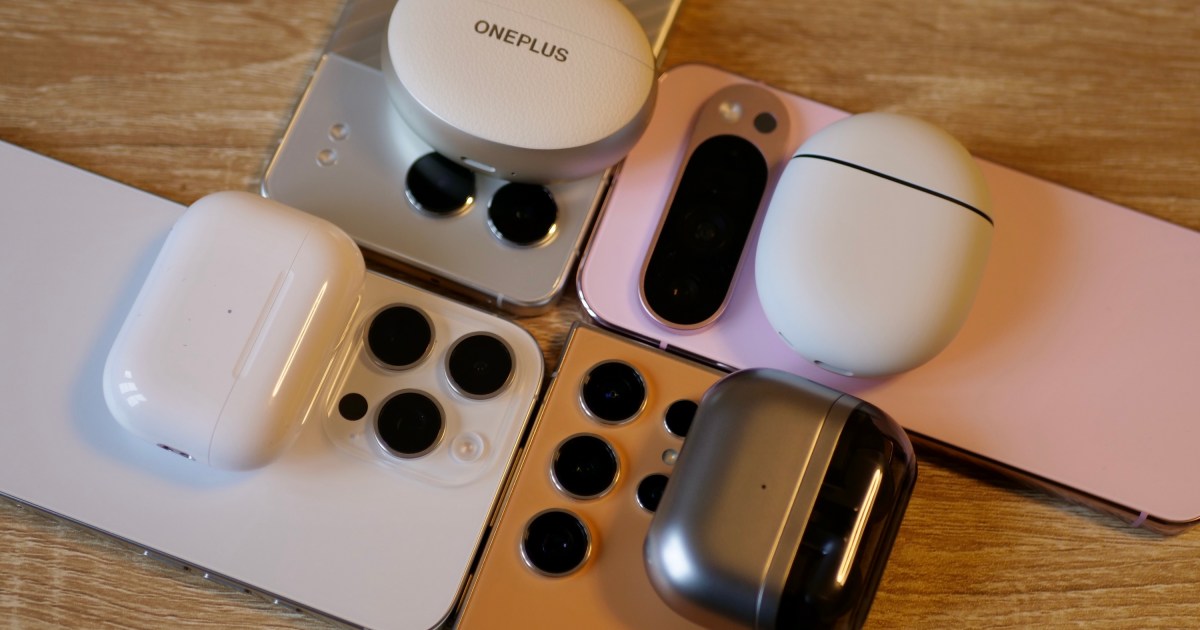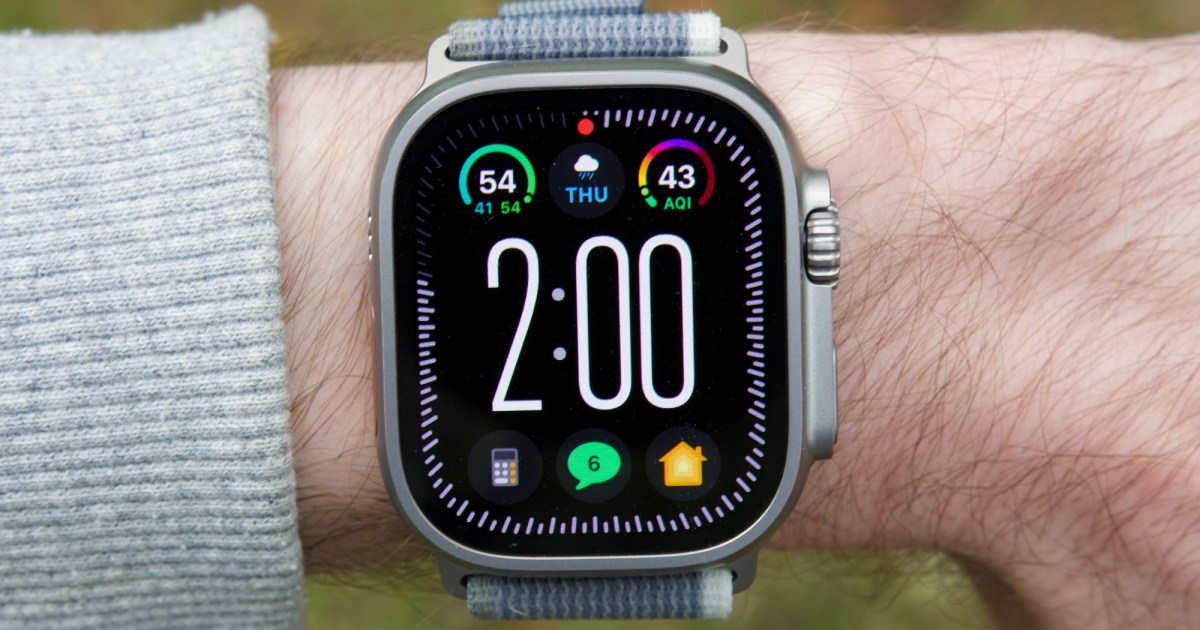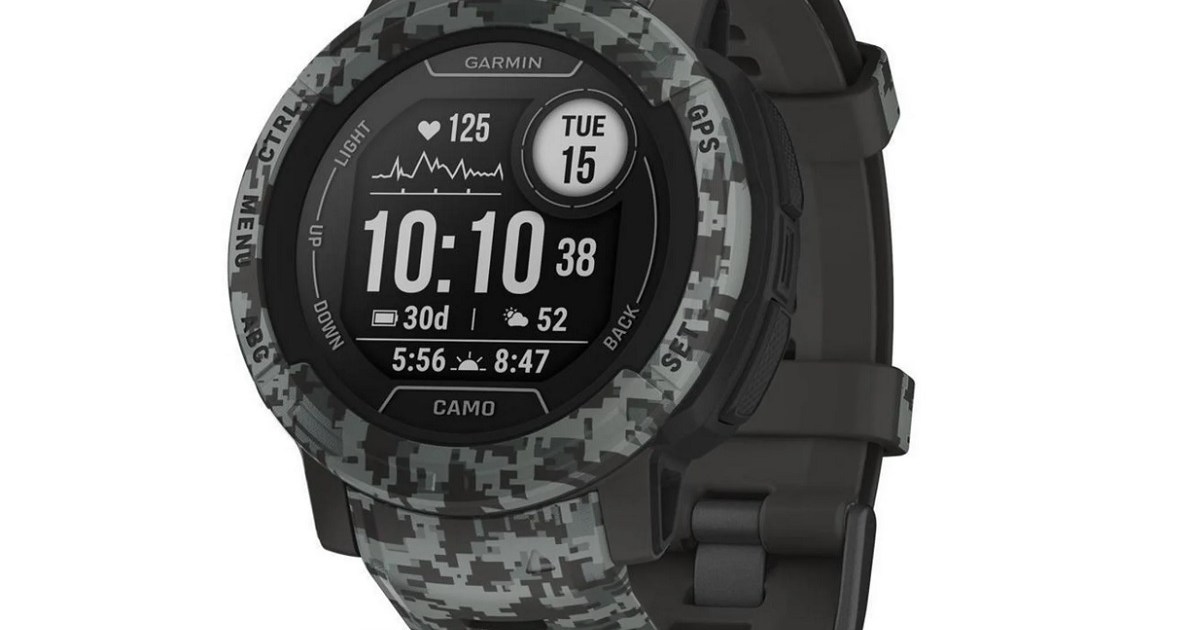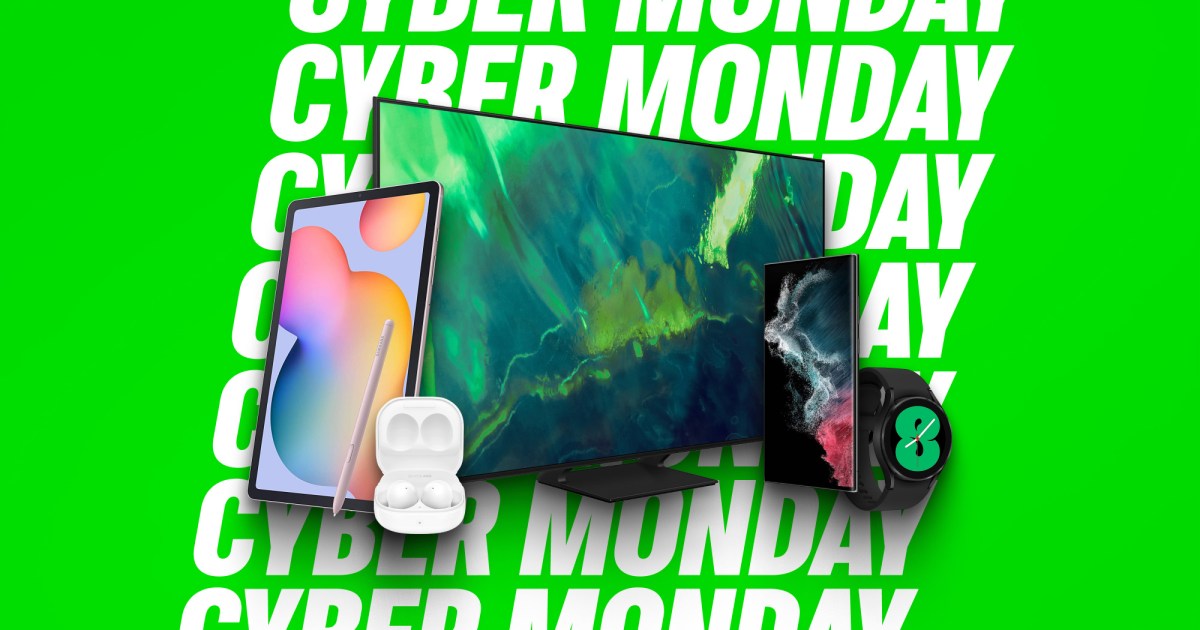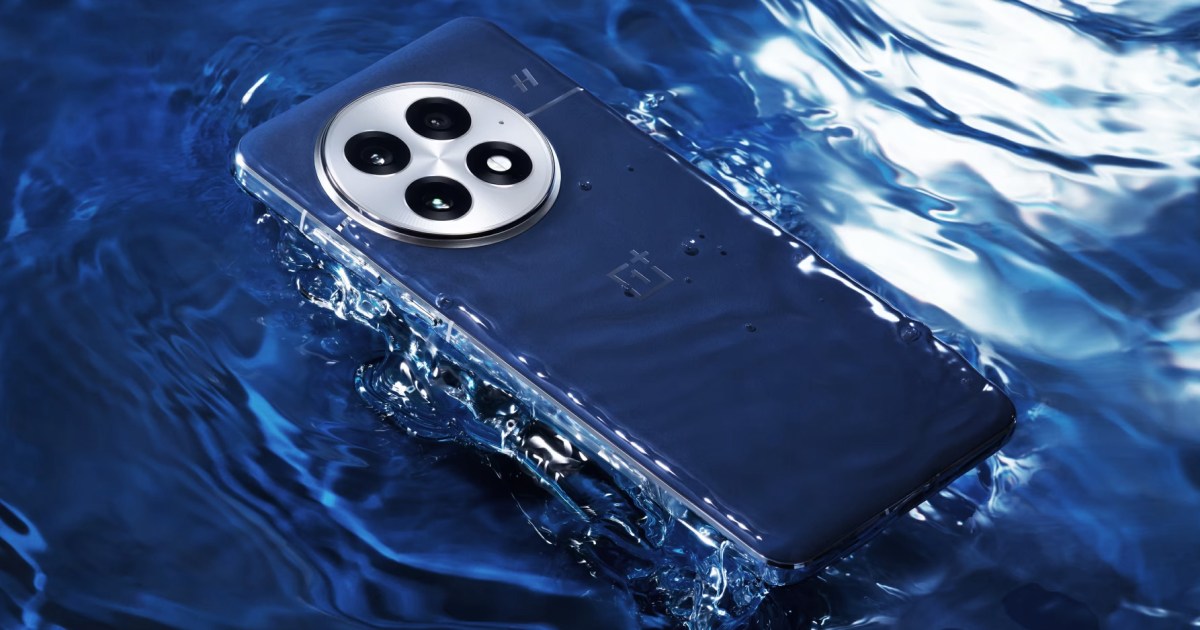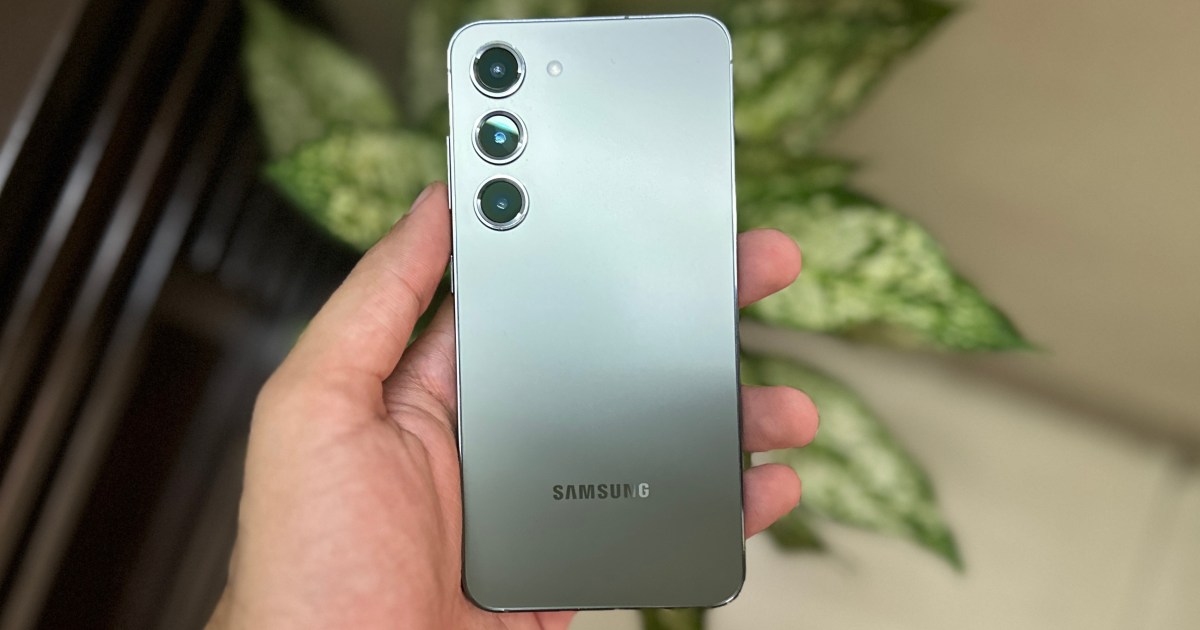When purchasing a new smartphone, the temptation to complete the ecosystem with matching wireless earbuds is strong, especially with brands like Apple, Samsung, Google, and OnePlus offering their own compelling options. But does brand loyalty truly enhance the earbud experience, or is it just marketing hype? We’ve tested the latest phones and earbuds from these manufacturers to uncover the truth and determine the best pairings.
Ecosystem Integration: More Than Just Matching Brands
This isn’t a review of individual phones or earbuds, but rather an exploration of the ecosystem benefits and added features gained by pairing Apple with Apple, Samsung with Samsung, and so on. The market is flooded with excellent true wireless earbuds, so what justifies sticking with the same brand? We’ve focused on this integration aspect rather than deep-diving into sound quality, battery life, or phone-specific audio features.
Our testing lineup includes the benchmark pairing of the iPhone 16 Pro Max and Apple AirPods Pro 2. We also paired the Samsung Galaxy S24 Ultra with the Samsung Galaxy Buds 3 Pro, the Google Pixel 9 Pro with the Google Pixel Buds Pro 2, and the OnePlus Nord 4 with the OnePlus Buds Pro 3.
While all these earbuds are interchangeable and connect via Bluetooth to any phone, pairing with the same brand promises a more seamless experience. Let’s see if brand loyalty pays off or if mixing and matching is just as good.
Apple’s Seamless Symphony: iPhone 16 Pro Max and AirPods Pro 2
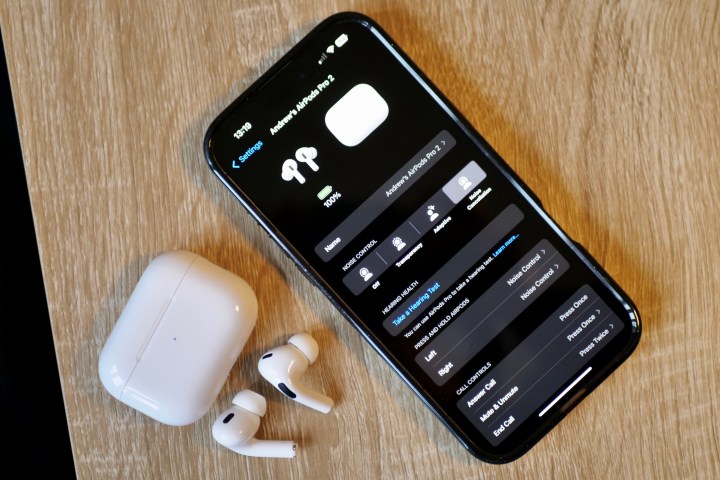 Apple iPhone 16 Pro Max with AirPods Pro 2.Apple iPhone 16 Pro Max with AirPods Pro 2
Apple iPhone 16 Pro Max with AirPods Pro 2.Apple iPhone 16 Pro Max with AirPods Pro 2
The iconic pairing of Apple’s iPhone and AirPods Pro 2 offers arguably the smoothest integration in mobile tech. Initial setup is remarkably easy with a few taps, and the AirPods Pro 2 automatically pair with other Apple devices on your account. Reconnecting is swift, with the Dynamic Island displaying battery status upon connection.
Interaction is multifaceted. The Settings app provides granular control over noise cancellation modes, conversation awareness, volume reduction, spatial audio, head gestures, and even ear tip fit testing. However, these features aren’t forced upon you; basic operation is readily available.
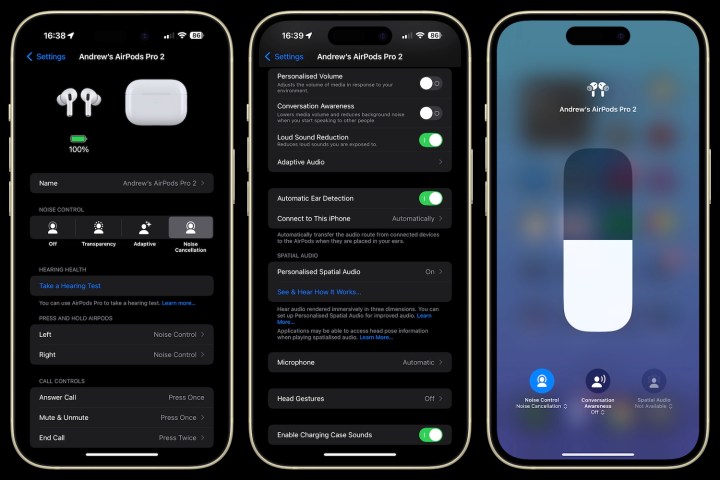 Screenshots taken from the AirPods Pro 2 connected to an iPhone 16 Pro Max.AirPods Pro 2 Settings
Screenshots taken from the AirPods Pro 2 connected to an iPhone 16 Pro Max.AirPods Pro 2 Settings
The control panel offers quick access to noise cancellation, conversation awareness, spatial audio, and background sounds. The Batteries widget displays charge levels for both the case and earbuds. This deep integration within iOS, rather than relying on separate apps, provides a streamlined experience. Combined with excellent comfort, top-tier noise cancellation, Siri integration, and precise touch controls, the AirPods Pro 2 and iPhone pairing sets the standard.
Samsung’s Solid Integration: Galaxy S24 Ultra and Galaxy Buds 3 Pro
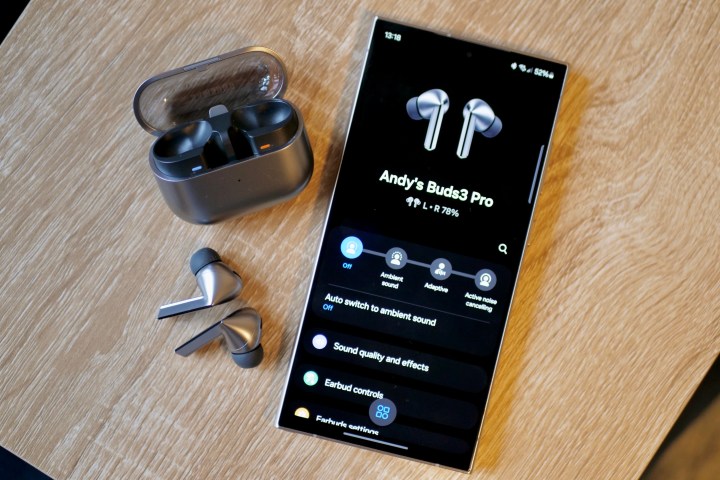 The Samsung Galaxy S24 Ultra with the Galaxy Buds3 Pro.Samsung Galaxy S24 Ultra with the Galaxy Buds 3 Pro
The Samsung Galaxy S24 Ultra with the Galaxy Buds3 Pro.Samsung Galaxy S24 Ultra with the Galaxy Buds 3 Pro
While initial connection and updates are straightforward, controlling the Galaxy Buds 3 Pro on a Galaxy S24 Ultra requires the Samsung Wearable app. This app provides access to charge levels, noise cancellation, equalizer settings, 360-degree audio, head tracking, customizable controls, and unique features like neck stretch reminders and notification readouts.
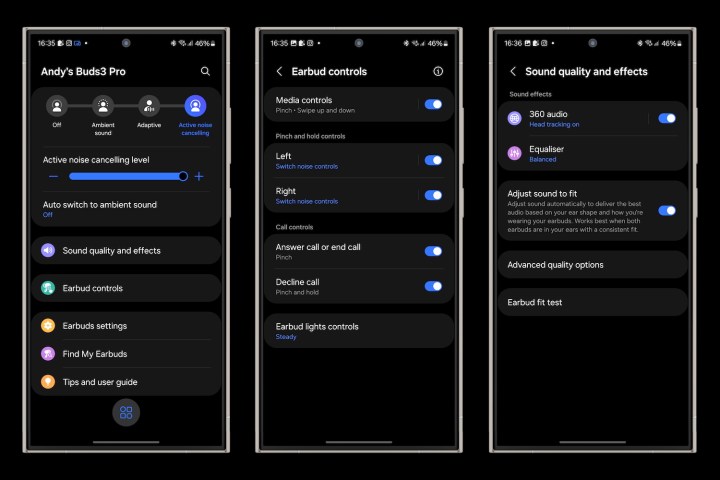 Screenshots taken from the Galaxy Buds3 Pro connected to the Galaxy S24 Ultra.Galaxy Wearable app
Screenshots taken from the Galaxy Buds3 Pro connected to the Galaxy S24 Ultra.Galaxy Wearable app
Navigating settings feels fragmented, with redundant options in the Bluetooth settings and the Wearable app. Despite this, the Galaxy Buds 3 Pro offer fantastic noise cancellation, stylish stem lighting effects, and comfortable wear. Although integration isn’t as seamless as Apple’s, it’s highly functional. The availability of the Galaxy Wearable app on the Google Play Store extends compatibility to other Android devices, broadening its appeal.
Google’s Flexible Approach: Pixel 9 Pro and Pixel Buds Pro 2
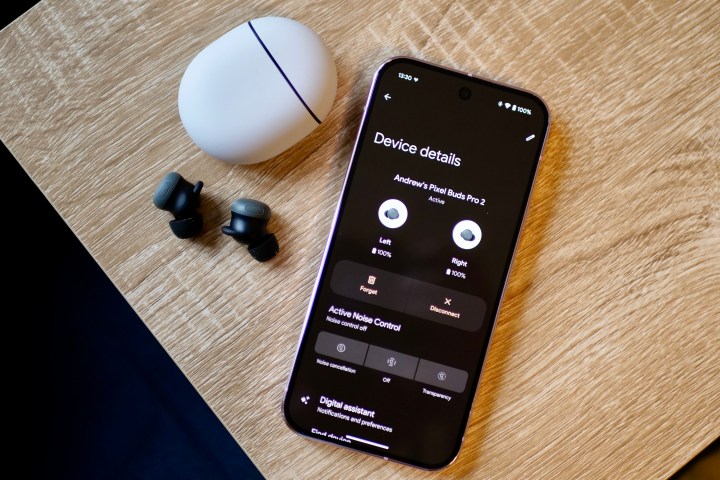 The Google Pixel 9 Pro and Google Pixel Buds Pro 2.Google Pixel 9 Pro and Google Pixel Buds Pro 2
The Google Pixel 9 Pro and Google Pixel Buds Pro 2.Google Pixel 9 Pro and Google Pixel Buds Pro 2
Connecting the Pixel Buds Pro 2 to the Pixel 9 Pro offers a choice of interaction: either through Bluetooth settings or the dedicated Pixel Buds app. Both provide the same functionality, simplifying access to features. The app displays battery levels, noise cancellation options, spatial audio controls, an equalizer, conversation detection, and listening habit information. A standout feature is Google Gemini integration, allowing voice commands, notification readouts, and phone-free operation.
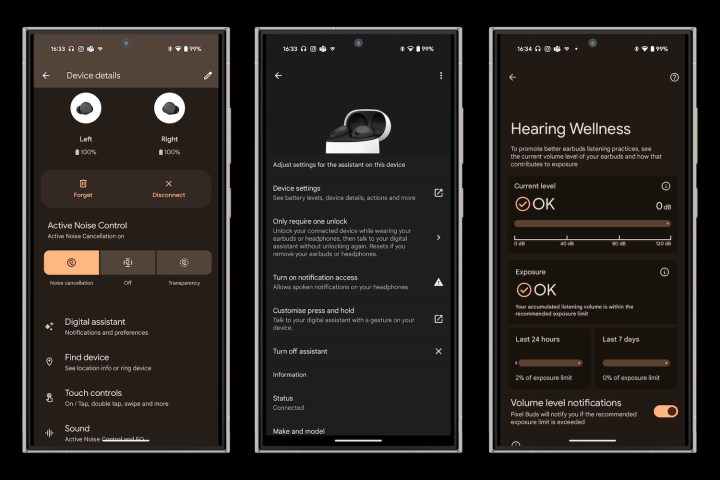 Screenshots taken from the Pixel Buds 3 connected to the Pixel 9 Pro.Pixel Buds app
Screenshots taken from the Pixel Buds 3 connected to the Pixel 9 Pro.Pixel Buds app
The Pixel Buds app, also available on the Google Play Store, extends its versatility to other Android phones, enabling features like multi-device connection even without full Gemini integration. This cross-platform compatibility makes the Pixel Buds Pro 2 a compelling choice for Android users.
OnePlus’ Hidden Potential: Nord 4 and Buds Pro 3
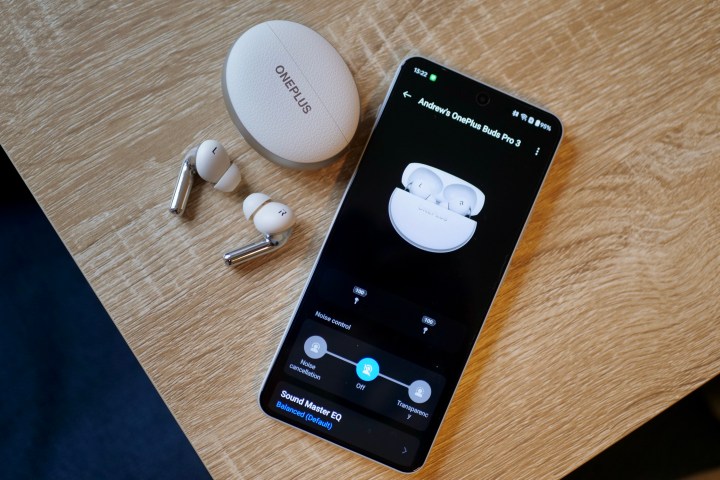 The OnePlus Nord 4 with the OnePlus Buds Pro 3.OnePlus Nord 4 with OnePlus Buds Pro 3
The OnePlus Nord 4 with the OnePlus Buds Pro 3.OnePlus Nord 4 with OnePlus Buds Pro 3
Unlike Samsung, the OnePlus Buds Pro 3 doesn’t require a dedicated app on OnePlus phones. However, for other brands, the HeyMelody app is recommended. Despite this, accessing features on a OnePlus phone is surprisingly convoluted, requiring navigating through Bluetooth settings and multiple sub-menus.
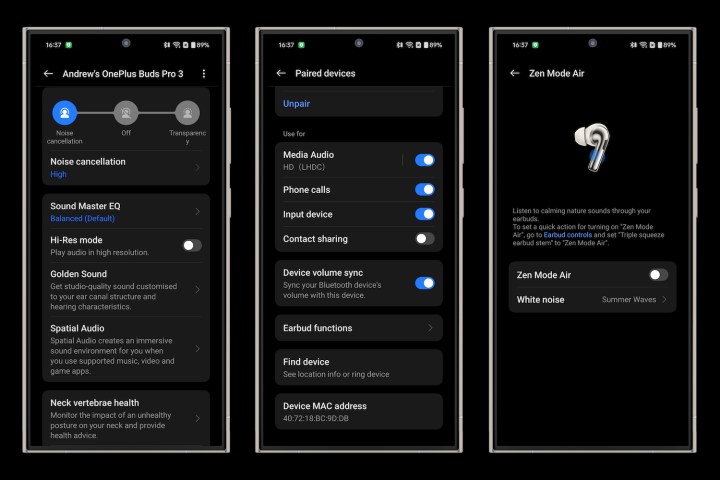 Screenshots from the OnePlus Buds Pro 3 connected to the OnePlus Nord 4.OnePlus Buds Pro 3 settings
Screenshots from the OnePlus Buds Pro 3 connected to the OnePlus Nord 4.OnePlus Buds Pro 3 settings
The HeyMelody app, while available on other platforms, adds little value, redirecting users to Bluetooth settings anyway. Features like fit test, spatial audio, equalizer, noise control, and Zen Mode Air are present, but accessing them feels cumbersome. The excellent touch controls and stylish case design are overshadowed by the clunky integration with OnePlus phones.
Mixing and Matching: Exploring Cross-Brand Compatibility
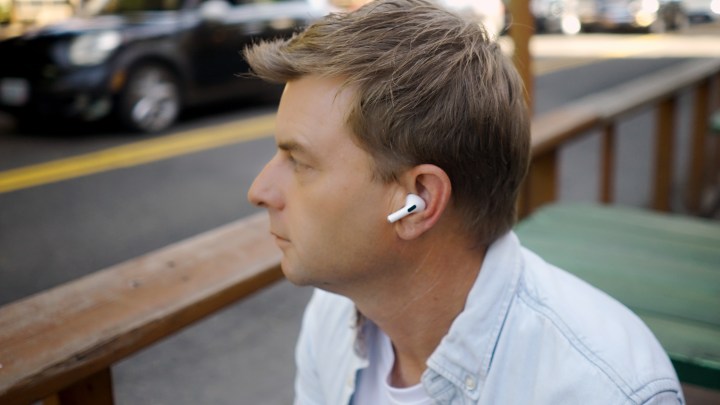 Apple AirPods Pro 2 with USB-C and MagSafe review
Apple AirPods Pro 2 with USB-C and MagSafe review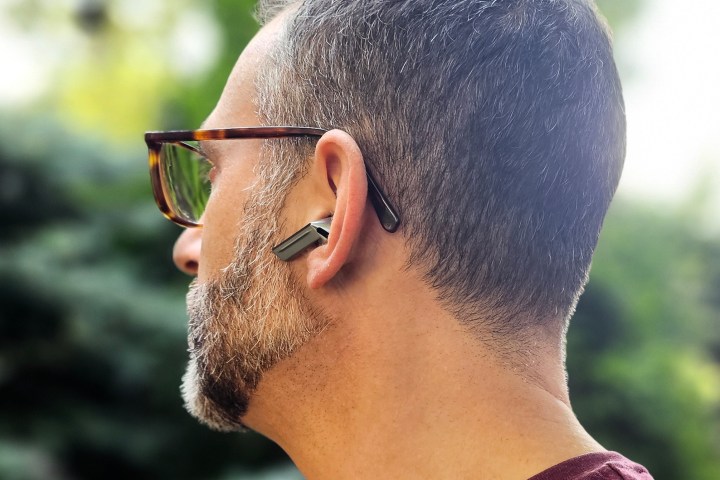 Simon Cohen wearing Samsung Galaxy Buds 3 Pro (rear view).
Simon Cohen wearing Samsung Galaxy Buds 3 Pro (rear view). Google Pixel Buds Pro 2Various earbuds
Google Pixel Buds Pro 2Various earbuds
Using earbuds like the Pixel Buds Pro 2 or Galaxy Buds 3 Pro with an iPhone limits functionality and access to companion apps. However, the OnePlus Buds Pro 3, thanks to the HeyMelody app on iOS, offers a consistent experience across platforms.
Conversely, using AirPods Pro 2 with Android provides basic functionality and limited settings customization. While mixing and matching might compromise features like multi-device connection or codec support, the universal Bluetooth connection ensures basic usability. Reverse wireless charging, available on some Android devices, offers convenient charging for compatible earbud cases.
The Verdict: Brand Loyalty vs. Flexibility
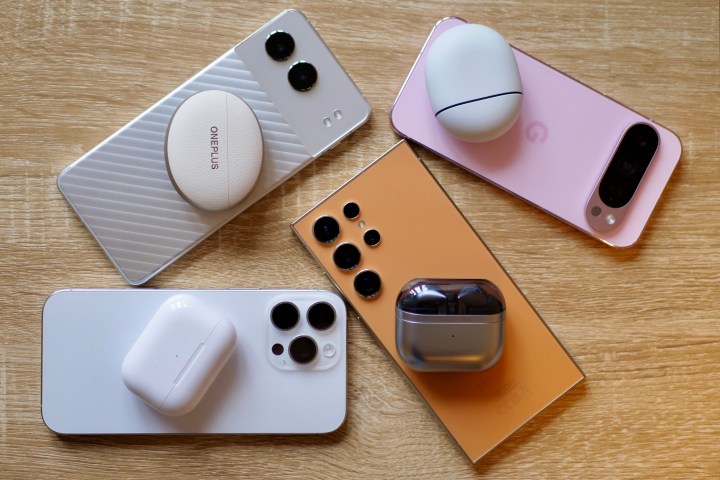 The OnePlus Nord 4 and OnePlus Buds Pro 3, Google Pixel 9 Pro and Google Pixel Buds 3, Apple iPhone 16 Pro Max with Airpods Pro 2, and Samsung Galaxy S24 Ultra with Samsung Galaxy Buds3 Pro.Various phone and earbud pairings
The OnePlus Nord 4 and OnePlus Buds Pro 3, Google Pixel 9 Pro and Google Pixel Buds 3, Apple iPhone 16 Pro Max with Airpods Pro 2, and Samsung Galaxy S24 Ultra with Samsung Galaxy Buds3 Pro.Various phone and earbud pairings
The decision of whether to stick with the same brand for phone and earbuds isn’t as clear-cut as it seems. The AirPods Pro 2 and iPhone remain the gold standard for seamless integration. Surprisingly, the OnePlus Buds Pro 3 also perform well with iPhones thanks to the HeyMelody app.
Android users enjoy greater flexibility, with the Pixel Buds Pro 2 and Samsung Galaxy Buds 3 Pro offering cross-platform compatibility through their respective apps. While some features might be lost when mixing and matching, the core functionality remains consistent. The OnePlus Nord 4’s convoluted integration highlights the potential benefits of cross-brand pairings in some cases.
Ultimately, while brand loyalty offers the most integrated experience, particularly with Apple, Android users can confidently explore cross-brand options with minimal compromise. Understanding the ecosystem integration of each brand empowers informed decisions, allowing users to prioritize features and compatibility according to their needs.



